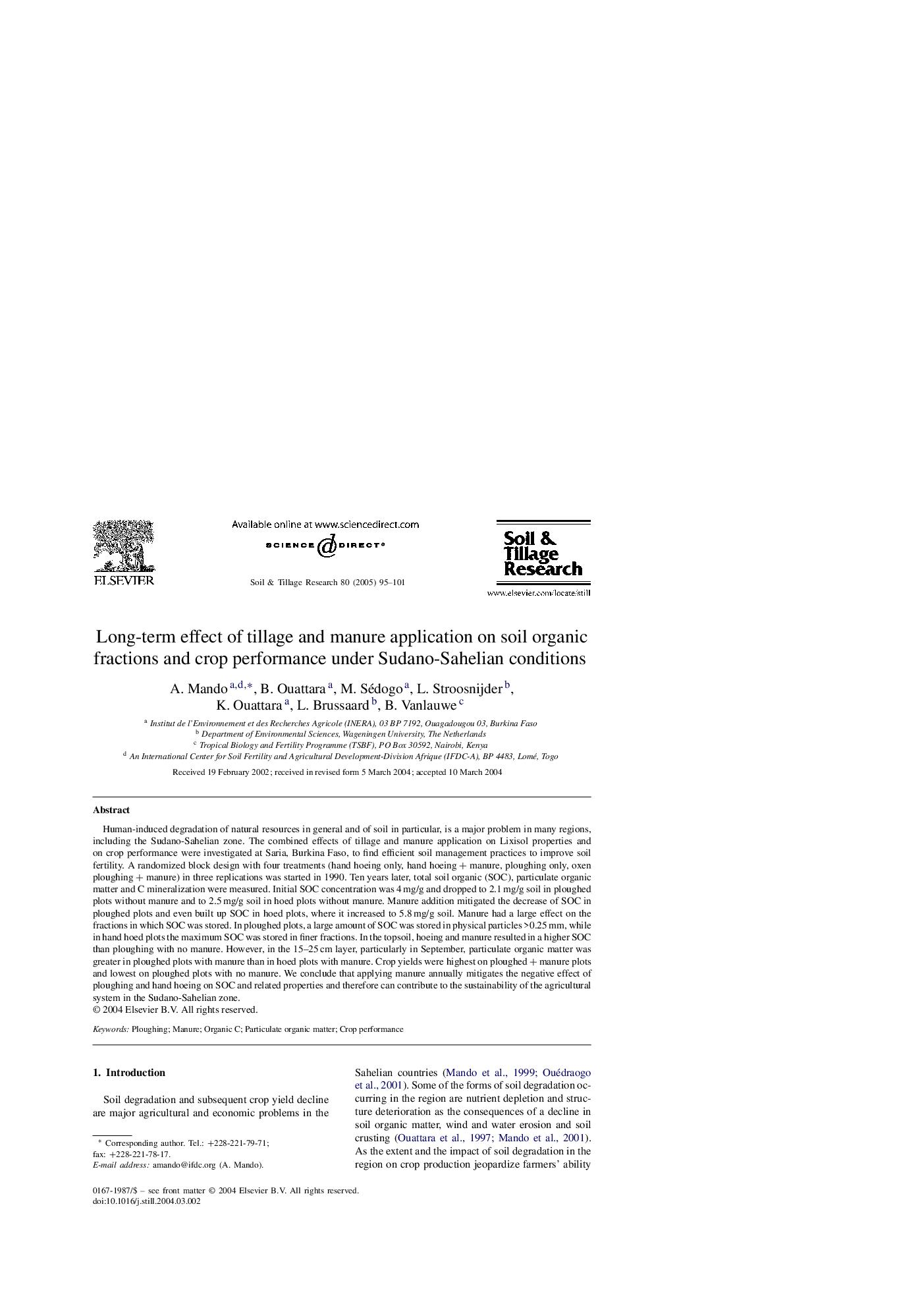| Article ID | Journal | Published Year | Pages | File Type |
|---|---|---|---|---|
| 9642682 | Soil and Tillage Research | 2005 | 7 Pages |
Abstract
Human-induced degradation of natural resources in general and of soil in particular, is a major problem in many regions, including the Sudano-Sahelian zone. The combined effects of tillage and manure application on Lixisol properties and on crop performance were investigated at Saria, Burkina Faso, to find efficient soil management practices to improve soil fertility. A randomized block design with four treatments (hand hoeing only, hand hoeing+manure, ploughing only, oxen ploughing+manure) in three replications was started in 1990. Ten years later, total soil organic (SOC), particulate organic matter and C mineralization were measured. Initial SOC concentration was 4Â mg/g and dropped to 2.1Â mg/g soil in ploughed plots without manure and to 2.5Â mg/g soil in hoed plots without manure. Manure addition mitigated the decrease of SOC in ploughed plots and even built up SOC in hoed plots, where it increased to 5.8Â mg/g soil. Manure had a large effect on the fractions in which SOC was stored. In ploughed plots, a large amount of SOC was stored in physical particles >0.25Â mm, while in hand hoed plots the maximum SOC was stored in finer fractions. In the topsoil, hoeing and manure resulted in a higher SOC than ploughing with no manure. However, in the 15-25Â cm layer, particularly in September, particulate organic matter was greater in ploughed plots with manure than in hoed plots with manure. Crop yields were highest on ploughed+manure plots and lowest on ploughed plots with no manure. We conclude that applying manure annually mitigates the negative effect of ploughing and hand hoeing on SOC and related properties and therefore can contribute to the sustainability of the agricultural system in the Sudano-Sahelian zone.
Related Topics
Physical Sciences and Engineering
Energy
Renewable Energy, Sustainability and the Environment
Authors
A. Mando, B. Ouattara, M. Sédogo, L. Stroosnijder, K. Ouattara, L. Brussaard, B. Vanlauwe,
